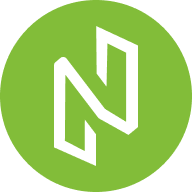
Prezzo di DappRadar

Disclaimer
OKX non fornisce raccomandazioni su investimenti o asset. Devi considerare attentamente se il trading o l'holding di asset digitali è adatto a te alla luce della tua condizione finanziaria. Consulta un professionista legale/fiscale/finanziario per domande sulla tua specifica situazione. Per ulteriori dettagli, fai riferimento ai nostri Termini di utilizzo e all'Avviso di rischio. Utilizzando il sito web di terze parti ("TPW"), accetti che qualsiasi utilizzo del TPW sarà soggetto alle condizioni del TPW e disciplinato dalle stesse. Se non espressamente dichiarato per iscritto, OKX e i suoi affiliati ("OKX") non sono associati in alcun modo al proprietario o all'operatore del TPW. Accetti che OKX non è responsabile di eventuali perdite, danni e qualsiasi altra conseguenza derivanti dall'utilizzo del TPW. Tieni presente che l'uso di un TPW potrebbe comportare una perdita o una diminuzione dei tuoi asset. Il prodotto potrebbe non essere disponibile in tutte le giurisdizioni.
Informazioni sul mercato di DappRadar
Capitalizzazione di mercato = Offerta circolante x Ultimo prezzo

Calcolatore RADAR


Il prezzo oggi dei DappRadar in USD
Conversioni di DappRadar popolari
| 1 RADAR in USD | 0,0025030 $ |
| 1 RADAR in EUR | 0,0022009 € |
| 1 RADAR in PHP | 0,14191 ₱ |
| 1 RADAR in IDR | 42,2091 Rp |
| 1 RADAR in GBP | 0,0018869 £ |
| 1 RADAR in CAD | 0,0034645 $ |
| 1 RADAR in AED | 0,0091935 AED |
| 1 RADAR in VND | 64,7942 ₫ |
Informazioni su DappRadar (RADAR)
- Sito web ufficiale
- White paper
- Block explorer
Domande frequenti relative al prezzo di DappRadar
DappRadar è una piattaforma leader che fornisce dati di mercato accurati e preziosi approfondimenti sul mercato delle applicazioni decentralizzate (dApp). Consente agli utenti di seguire senza problemi i movimenti del mercato e di rimanere informati sulle ultime tendenze e sugli sviluppi.
Il possesso di token RADAR offre una serie di vantaggi e utilità. I titolari di RADAR hanno l'opportunità di guadagnare ricompense e di accedere alle funzioni di tracciamento delle dApp e dei dati offerte dalla piattaforma. Inoltre, il possesso di token RADAR conferisce diritti di voto, consentendo ai titolari di partecipare attivamente alla governance e ai processi decisionali della comunità DappRadar.
Puoi acquistare facilmente i token RADAR sulla piattaforma di criptovalute OKX. L’exchange di trading spot di OKX offre la coppia di trading RADAR/USDT.
Informativa ESG
Calcolatore RADAR


Disclaimer
OKX non fornisce raccomandazioni su investimenti o asset. Devi considerare attentamente se il trading o l'holding di asset digitali è adatto a te alla luce della tua condizione finanziaria. Consulta un professionista legale/fiscale/finanziario per domande sulla tua specifica situazione. Per ulteriori dettagli, fai riferimento ai nostri Termini di utilizzo e all'Avviso di rischio. Utilizzando il sito web di terze parti ("TPW"), accetti che qualsiasi utilizzo del TPW sarà soggetto alle condizioni del TPW e disciplinato dalle stesse. Se non espressamente dichiarato per iscritto, OKX e i suoi affiliati ("OKX") non sono associati in alcun modo al proprietario o all'operatore del TPW. Accetti che OKX non è responsabile di eventuali perdite, danni e qualsiasi altra conseguenza derivanti dall'utilizzo del TPW. Tieni presente che l'uso di un TPW potrebbe comportare una perdita o una diminuzione dei tuoi asset. Il prodotto potrebbe non essere disponibile in tutte le giurisdizioni.












Social